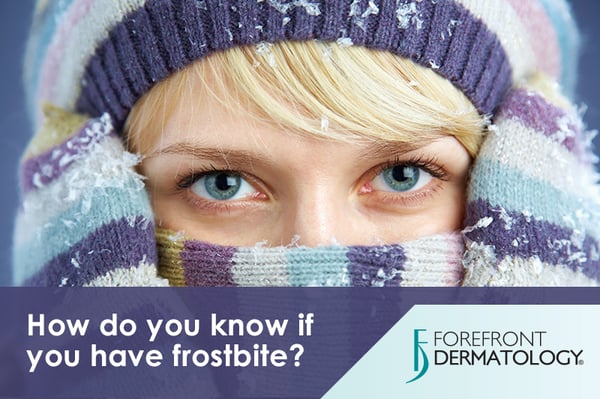
There are two types of people: those who embrace winter and all the snow-filled adventures it has to offer, and those who eagerly anticipate the coming of, well, anything but snow. Should you fall into the former, the risk of frostbite is real. Frostbite and You “In the general population, frostbite is fairly uncommon,” says Dr. Peter Katz of the Forefront Dermatology clinics in Appleton and New London, Wis. “It’s much more common among those who do extreme outdoor sports in the winter.” Frostbite occurs when extreme temperatures cause the blood vessels in your skin to constrict. This causes your blood to avoid your extremities in order to preserve your core temperature. Eventually, through prolonged exposure, the skin tissue in the affected areas will begin to die. It usually happens slowly and progresses through four degrees of severity. The first degree, also called frostnip, only affects the top layer of your skin (the epidermis). On the onset, you may feel itching and pain, and develop white, red or yellow patches on the skin. Since only the outermost layer of skin is affected, frostnip does not typically cause any lasting damage. Should the exposure continue, the skin may harden and freeze. This second-degree frostbite usually results in blisters one to two days after exposure. The blisters may appear hard and black, but since the deep tissue was not affected in second-degree cases, looks a lot worse than it actually is. Third- and fourth-degree frostbite affects your sensitive deep tissues. The skin feels hard and waxy. Muscles, tendons, blood vessels, and nerves freeze – which may result in a permanent loss of feeling. In extreme cases, the frostbitten area may need to be amputated. Dr. Katz adds, “If you’re worried about frostbite, use lukewarm water to soak the frostbitten extremity in. If you can’t get to warm water, just try to keep it dry. The idea is to gradually warm the appendage. So avoid using things like heating pads, warming by the fire or radiator since it may further complicate things. If it – fingers, toes, nose, et cetera – turns black, you need to seek medical attention immediately.” Tips for Frostbite-Free Adventures To make sure Jack Frost only nips at your nose, follow these helpful frostbite prevention tips:
- Bundling up is your best bet. Your skin is the most vulnerable to frostbite when left exposed. When planning on spending time outside, make sure your head and face are protected (particularly your ears and nose) and always remember to wear gloves.
- Real feel is real. What you see on the thermometer may not be what you feel when you venture outside. Biting winds and precipitation may cause the actual temperature to plummet. Before you head out, take into account the “real feel” temperature and bundle up accordingly.
- Waterproof and frostbite-free. Being cold is bad enough, but being cold and wet? Well that’s just asking for trouble. Choose waterproof outerwear to make your winter experience warm, safe and frostbite-free.
- Plan for the worst and hope for the best. Before you go dashing through the snow in your 4-door sleigh, make sure you’re prepared in case of emergency. Let someone know where you’ll be and when you should be expected to arrive at your destination, dress in layers, have an emergency blanket in your trunk and keep your cell phones charged.
Learn More About Frostbite from Forefront Dermatology. For as scary as frostbite can be, it’s no reason why you shouldn’t go out and enjoy with snow. With a little preparation and knowledge, walking though a winter wonderland should be fun and frostbite-free. If you’d like to learn more about frostbite prevention and treatments, you can always count on the physicians at Forefront Dermatology. To find the physician nearest you, visit the Locations page today.





